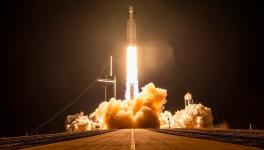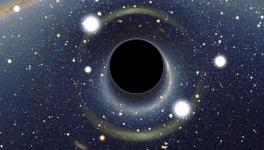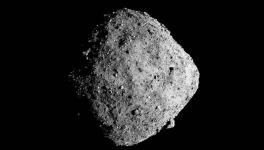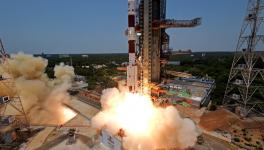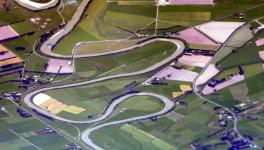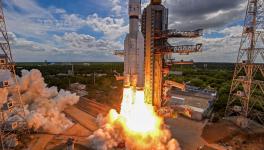James Webb Telescope Leaves From Earth to Look Into the Origin of the Universe

Image: James Webb Telescope, Source NASA website.
One of the most awaited moments in astrophysics had come into reality on this year's Christmas day. The new generation telescope, 'James Webb Space Telescope,' was launched on December 25 at 7:20 AM EST from Europe's spaceport in French Guiana, South America. The telescope was launched on an Ariane 5 rocket, a NASA (National Aeronautics and Space Administration) release said.
The mission is a joint effort by NASA, the ESA (European Space Agency) and the Canadian Space Agency, with an aim to find the light emanating from the early universe's first galaxies by exploring the solar system and the exoplanets- the planets that orbit stars other than the Sun.
Commenting on the event, NASA administrator Bill Nelson was quoted to have said, "The James Webb Space Telescope represents the ambition that NASA and our partners maintain to propel us forward into the future. The promise of Webb is not what we know we will discover; it's what we don't yet understand or can't yet fathom about our universe. I can't wait to see what it uncovers!"
The observatory (telescope) was released at an altitude of about 870 miles or 1400 kilometres. About five minutes after launch, ground teams began to receive data from Webb and the Ariane rocket separated from the observatory after 27 minutes into the flight. Again, after about 30 minutes from launch, Webb unfolded its solar array, and the ground team could confirm that the solar array was providing power to the observatory. After the flight into orbit for half an hour, the teams received signals confirming a successful outcome at a ground observatory at Malindi ground station in Kenya. The telescope is being put at an observing station 1.5 million kilometres from the Earth.
The most complex and the largest space observatory will begin six months of commissioning in space. Right after completion, the Webb telescope will send the first images, the NASA release said. The Webb carries four instruments, thought to be most updated and advanced, having highly sensitive detectors for infrared signals with unprecedented resolution. The telescope will study infrared light from celestial bodies with a clarity that has never been achieved. This important scientific mission is a successor to NASA's Hubble telescope and Spitzer space telescopes. The Webb also aims to complement the scientific discoveries of these missions.
The Webb differs in several aspects from its predecessors like the Hubble. The first is the capability of the observatory in its 6.5-meter wide golden mirror, which is three times wider than the primary reflector of Hubble. The enlarged reflector combined with the sensitive instrumentations that the Webb has will enable astronomers to have a deeper look into the space and go back in time than was achievable ever before. The large reflector has 18 segments, each having tiny motors on the back. The reflector will have to be focused so that it can receive infrared wavelengths from the early stars of the universe. The motors will adjust the curvature of the reflectors.
With an expense of 10 billion US dollars, the Webb telescope is expected to have a lifetime of 10 years in space. The Webb has a mass of 6200 kilograms.
A primary target of the observatory will be the epoch where the early pioneering stars whose light ended the darkness theorised to engulf the cosmos shortly after the Big Bang happened, a time of more than 13 billion years ago. The nuclear reactions in those celestial objects would have given birth to heavy atoms like carbon, nitrogen, oxygen, phosphorus and Sulphur, essential for forming lives. The other aim of the Webb of studying atmospheres of distant planets may help researchers judge if there are any such planets outside the solar system that are habitable.
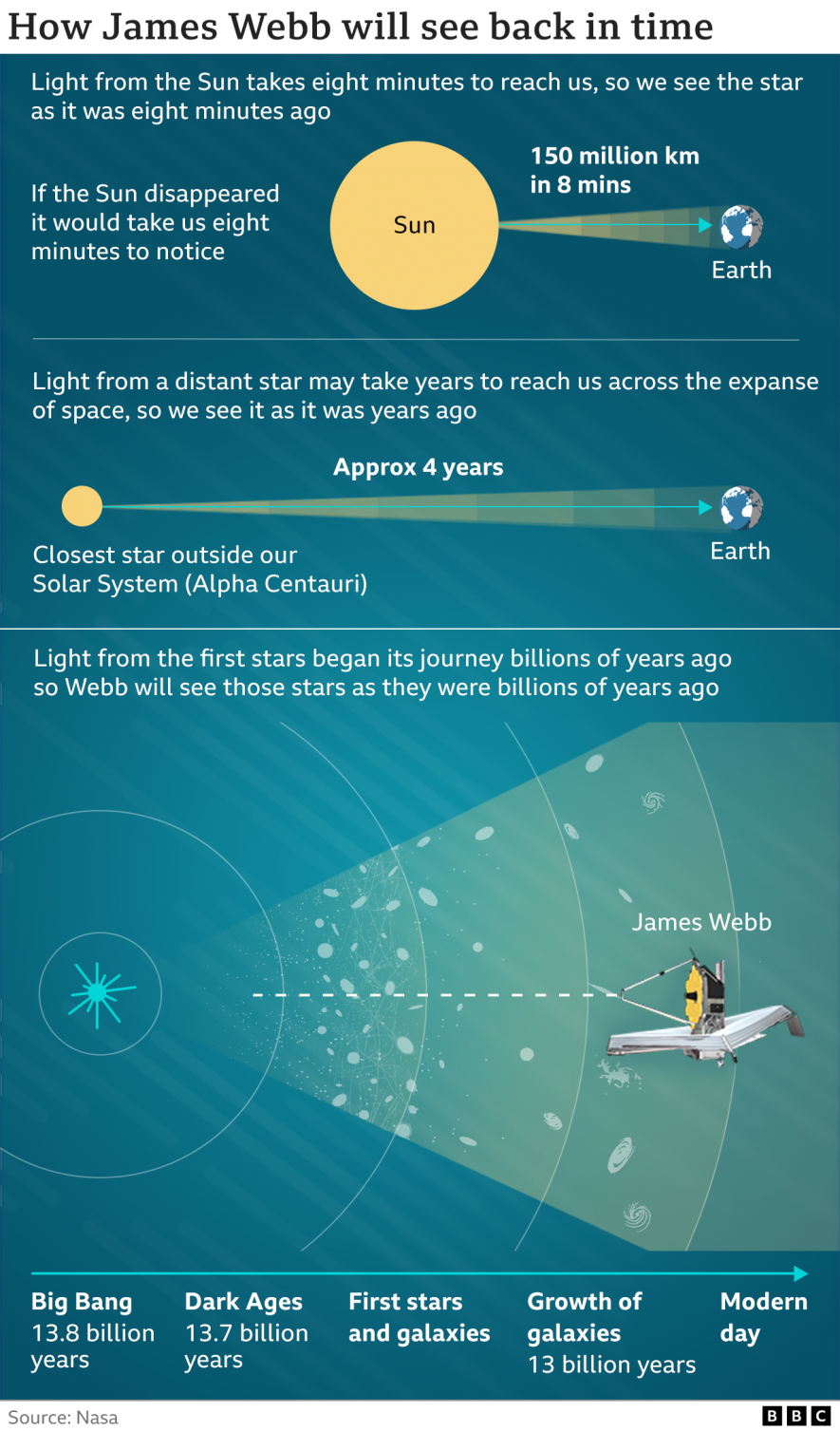
Image taken from BBC, for representation only.
Heidi Hammel, an interdisciplinary scientist of the mission, commented, "We're going to be entering a whole new regime of astrophysics, a new frontier; and that is what gets so many of us excited about the James Webb Space Telescope."
The James Webb telescope will be at extremely low temperatures. The reason behind keeping it cool is that the Webb will have to observe the infrared light from extremely distant objects, and for detecting those faint heat signals, the telescope itself must be kept cold. The Webb has several systems and protective measures to keep it cool and shield it from the heat by external sources. A sun shield protects the telescope from external sources of heat like Sun, moon, and Earth. The sun shield will cool the telescope to a temperature of minus 223 degrees Celsius. The other instruments in the Webb will also have cooler temperatures of varying degrees. The near-infrared instruments will work at minus 234 degrees Celsius, while the mid-infrared instrument will work at an even colder temperature of minus 266 degrees Celsius, according to NASA.
Senior science advisor of ESA, Mark McCaughrean, explained why they are keeping the telescope at such an extreme temperature, "The critical thing is that it all has to get very cold. This telescope actually will be at minus 233 degrees Celsius. Only then will it stop glowing at the infrared wavelengths beyond the visible where we want this telescope to work. And only then will it be able to take sensitive pictures of the distant Universe where the first galaxies were born and of planets going around other stars. So, there's a long way to go."
Get the latest reports & analysis with people's perspective on Protests, movements & deep analytical videos, discussions of the current affairs in your Telegram app. Subscribe to NewsClick's Telegram channel & get Real-Time updates on stories, as they get published on our website.









